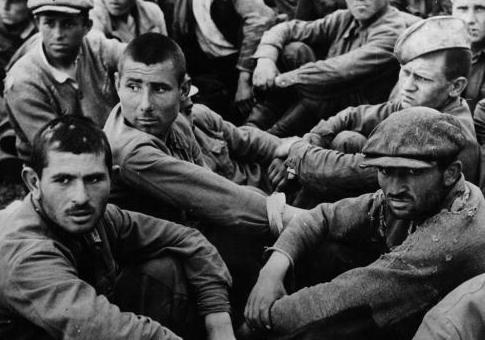Seventy-five years ago this month, the German Army finally reached the Volga River. But the Russians had a last line of defense—the city of Stalingrad. And they would fight to the last man.
It’s difficult to grasp the enormity of the battle. Hitler threw everything he had at the Soviets. Operation Barbarossa entailed 170 divisions—3 million men, more than 3,000 tanks, some 2,000 aircraft.
Hitler had changed his objectives yet again. Forget about Moscow. Forget about Leningrad. If the Germans could take Stalingrad, they could shut down the Volga supply route, bringing Stalin to his knees. And unlike the siege of Leningrad, the attack on Stalingrad was to be a quick and decisive strike. At which point the Luftwaffe General Baron von Richthofen—pioneer of carpet-bombing and cousin of the Red Baron—made a strategic error.
As the eminent historian Antony Beevor writes in Stalingrad, "Richthofen’s massive bombing raids had not only failed to destroy the enemy’s will, their very force of destruction had turned the city into a perfect killing ground for the Russians to use against them."
Over the next few months the struggle for Stalingrad devolved into hand-to-hand combat. The flamethrower proved ideal in this environment. Except when someone put a bullet into the fuel tank, instantly incinerating the flamethrower. This happened quite a bit.
Indeed, the city became a sniper’s playground. As Alan Clark relates in Barbarossa,
[A] section of German infantrymen, armed with submachine guns and grenades, rise from the rat runs in the rubble, where they have been crawling, and empty their magazines at the anti-tank gun. As they do so Russian snipers who have been lying motionless for hours in the eaves of skeletal buildings, high on the ledges of tottering façades, pick them off one by one. If the action does not escalate, with each side calling in more and heavier weapons in support, it will soon die away, leaving only the wounded exposed to view, crying in agony where they lie, until dark.
By November 1942, the Soviets had the German Sixth Army encircled. Much to the ire of the Führer, Field Marshal Friedrich Paulus surrendered his forces—22 generals and 90,000 men. The tide had turned, and Hitler’s forces would from here on be in retreat. (Paulus, incidentally, remained a POW until 1953.)
It was a staggering defeat for the Wehrmacht, considering the damage they inflicted on the Red Army—well over a million casualties. Some 70,000 had also switched sides to fight with the Germans as Hilfswillige (volunteers). The Soviets executed more than 13,000 of their own men for acts of desertion. And yet they managed to push back—all the way to Berlin.
But 75 years ago this month the unraveling of the Axis armies had only just begun. "On September 7," Beevor notes in Stalingrad, "a day when [General Franz Halder] noted 'satisfying progress at Stalingrad,' Hitler’s exasperation at the failure to advance in the Caucasus came to a head." General Walther Warlimont, who witnessed the Führer’s tirade, later recalled, "This man has lost face; he has realized that his fatal gamble is over, that Soviet Russia is not going to be beaten in this second attempt."
On September 9, notes Beevor, a Panzer unit got hold of the Soviet publication Red Star. Writer Ilya Ehrenburg had a message for his compatriots—one that should have sent chills through the Wehrmacht: "Do not count days; do not count miles. Count only the number of Germans you have killed. Kill the German—this is your mother’s prayer. Kill the German—this is the cry of your Russian earth. Do not waver. Do not let up. Kill."
